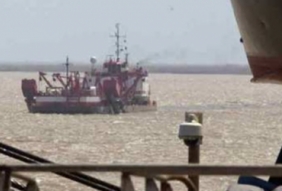
Posted on June 20, 2016
A bevy of Brooklyn’s federal lawmakers joined with U.S. Army Corps of Engineers (USACE) officials yesterday to announce they have completed the $28 million multiyear sand erosion project that will increase resiliency and reduce the risks coastal storms pose to residents and businesses on Coney Island.
The sand restoration project took place on the private gated community of Sea Gate, which is on the extreme western end of Coney Island. Engineers have deemed that shoring up this end of Coney Island will also prevent sand erosion from the Coney Island Public Beach and surrounding beaches, which played a key role in helping to mitigate storm surge damage during Hurricane Sandy.
The project is federally funded through the Disaster Relief Appropriations Act of 2013, the Sandy Relief Bill (Public Law 113-2).
“The completion of the Coney Island coastal protection project is great news and will provide desperately-needed security against future storms and floods for the people of Coney Island and Sea Gate,” said U.S. Sen. Charles E. Schumer. “Making Coney Island’s waterfront neighborhoods and beaches more resilient and secure was a very worthy effort, and I am proud to be a part of this terrific accomplishment.”
Joining Schumer for the announcement were Congress members Jerrold Nadler and Hakeem Jeffries. Nadler had long represented Coney Island, but after recent redistricting, Jeffries now represents the area in the House. Thus both lawmakers contributed to getting crucial federal funding for the project.
The first phase of the project started over 20 years ago with widening and elevating of Coney Island beach from Corbin Place to West 37th Street. Since then beach replenishment, work has continued to ensure that Coney Island is ready for the next storm event. Preventing sand erosion on Coney Island Public Beach and surrounding beaches helped lessen the storm surge damage during Hurricane Sandy.
The project completion also comes with 4 new T-groin structures and reinforcement with bedding stone of the Norton Point Dike and the West 37th Street Terminal Groin. This additional work on the project will minimize sand erosion, and reduce damage to homes and business in the event of another storm.
“Superstorm Sandy may have damaged many of the homes and businesses in neighborhoods throughout the district I represent, but it failed to dampen our resolve and commitment to rebuilding our community,” said Jefferies.
Nadler said he is thrilled announce the completion of the T-Groins shore protection project in Coney Island.
“Twenty-four years ago when I was first elected to Congress, I made a commitment to the people of this community that I would safeguard Coney Island’s beaches after the Nor’easter of 1992 devastated Sea Gate. A need that was spotlighted again after Superstorm Sandy hit Coney Island in 2012…. The famous beaches of Coney Island are protected for generations to come,” said Jerrold.
“Twenty-four years ago when I was first elected to Congress, I made a commitment to the people of this community that I would safeguard Coney Island’s beaches after the Nor’easter of 1992 devastated Sea Gate. A need that was spotlighted again after Superstorm Sandy hit Coney Island in 2012. The famous beaches of Coney Island are protected for generations to come,” said Nadler.
State Department of Environmental Conservation (DEC) Acting Commissioner Basil Seggos issued a word of caution though saying residents and property owners should remain aware that this project will not protect them from all levels of storms, climate change, and sea level rise which will constantly change as we move into the future.
“New York is working with the Corps of Engineers, along with the State of New Jersey and New York City to initiate a study that will further evaluate the conditions in the New York Harbor area to determine what addition measures may be need to assist the areas in flood protection and increased resiliency,” said Seggos.
Source: Jewish Voice





